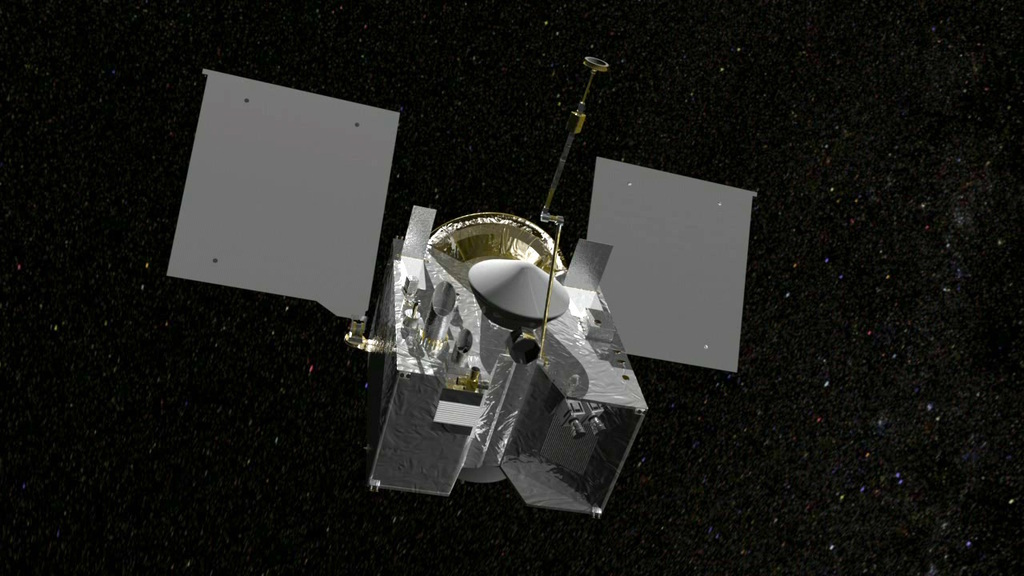Learn – How Do We Collect Samples from an Asteroid?
Learn – How Do We Collect Samples from an Asteroid? https://asteroidday.org/wp-content/themes/fildisi/images/empty/thumbnail.jpg 150 150 Asteroid Day https://asteroidday.org/wp-content/themes/fildisi/images/empty/thumbnail.jpg

Learning Objective: To understand how spacecraft collect samples from the surface of an asteroid
Overview:
Collecting samples from the surface of asteroids is now a reality. Both JAXA’s Hayabusa2 and NASA’s OSIRIS-REx are designed to do this. They will return their samples to Earth where they will be subjected to many more tests than would be possible with the spacecraft’s own instruments. To collect the samples, both teams have designed similar systems which first dislodge the asteroid’s surface matter and then funnel it into collection units.
Specifics:
The weak gravitational fields of asteroids make them a prime target for sample collection because spacecraft can easily approach their surfaces and then back away without the need for large rocket engines. The manoeuvre is more like a docking with a space station than a landing on a planet.
To collect the samples, the spacecraft again utilises the asteroid’s weak gravity. Both missions feature an extended collection funnel that touches the asteroid, and a way to dislodge material from the surface underneath the funnel. As the small rocks move up into the funnel, they are directed into collections pods.

OSIRIS-REx deploys its Touch-And-Go Sample Acquisition Mechansim (TAGSAM) instrument.
In the case of Hayabusa2, which collected samples from asteroid Ryugu, the material was dislodged by the spacecraft firing a small projectile into the surface. But there was a surprise. The mission scientists had expected the top layer, known as the regolith, of the asteroid to be powdery. But the observations from the mission’s tiny rovers that landed on the surface showed instead that the regolith was centimetre-sized gravel.
Using an identical projectile system on Earth, the scientists fired the ‘bullet’ into some centimetre-sized gravel on Earth to verify that enough would be dislodged to be collected by the spacecraft. Satisfied by the results, the actual collection attempt went ahead.
Hayabusa2 dropped a reflective ‘beanbag’ on the surface of Ryugu and used this to guide itself to the precise touch down spot on 22 February 2019. The spacecraft did a second sample collection on 11 July 2019, this time from a 10m-diameter crater than it had made using a larger projectile to unearth deeper, pristine asteroidal material.
In the case of OSIRIS-REx, the mission refers to it’s sample collection as the touch-and-go (TAG) manoeuvre. The spacecraft has extensively mapped its target area and will use a computer technique called Natural Feature Tracking (NFT) to guide itself to the surface.
Once the funnel touches down, instead of firing a solid projectile, OSIRIS-REx will stir up the regolith on asteroid Bennu by discharging pressurized nitrogen gas canisters. In total, the funnel will be in contact with the asteroid for about five seconds.
OSIRIS-REx’s first sample collection attempt is scheduled for 20 October. Two days later a camera will take pictures of the collection head to see whether the samples have been captured. And two days after that, the spacecraft will perform a spin manoeuvre to determine the mass of the collected samples.
OSIRIS-REx will perform up to three sample collections and deliver them to Earth on 24 September 2023. Hyabusa2 is already on its way home. It’s samples will arrive this year on 6 December.
Learn more about this subject by visiting these websites:
NASA’s Dr Amy Simon takes us behind the scenes of the OSIRIS-REx mission: OSIRIS-REx Adventures with Dr Amy Simon
OSIRIS-REx getting ready for sample collection: NASA’s OSIRIS-REx Begins its Countdown to TAG
OSIRIS-REx’s Natural Feature Tracking (NFT): Bennu’s Boulders Shine as Beacons for NASA’s OSIRIS-REx
Lockheed Martin built OSIRIS-REx’s sampling instrument: OSIRIS-REx Samples an Asteroid to Understand the Solar System
Hayabusa2 investigates the surface of asteroid Ryugu: Shooting bullets into Ryugu!
Hayabusa2’s successful sample collection from Ryugu: Image from just after touchdown
This video shows the moment that JAXA’s Hayabusa2 first touched asteroid Ryugu and sampled its surface. Credit: JAXA.

